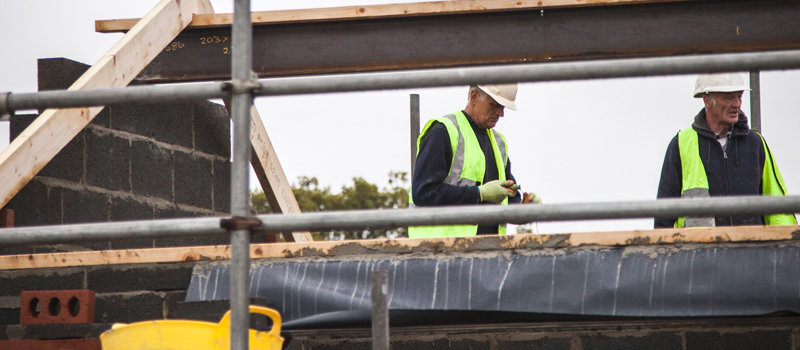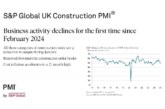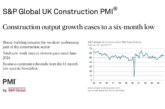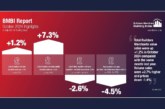
The latest ONS figures highlighted a decline in construction activity during Q3. Output in the sector was 2.2% lower than in Q2 and 0.1% lower than a year ago, and was 4.3% lower than the pre-recession peak.
Dr Noble Francis, Economics Director at the Construction Products Association, put the data into context: “The fall in construction output in Q3, compared to a year ago, was the first annual fall since 2013 Q1. Skills shortages have been a key issue recently in the industry and are hindering growth, especially in house building. Where skilled labour is available, wage inflation has also been a serious issue, hindering the viability of many sites.
“In the private commercial sector — the largest construction sector — there are still many projects in the pipeline due to contracts that were signed 18-24 months ago. However, sharp rises in costs since then, due to a lack of skilled labour, have adversely affected margins and meant that many projects are on hold for the moment whilst contractors go back to clients and renegotiate prices.
“The ONS figures should be approached with an element of caution. This is the first fall in output for more than two years and business sentiment remains positive.”
“Overall, recovery is never a straight line and there are always a few bumps and scrapes along the way. Projects in the pipeline across most construction sectors suggest that activity in the industry will rise in 2016 and our forecasts anticipate 4.2% growth in total construction next year, driven by recovery in house building, commercial and infrastructure activity. Skills shortages, however, are proving to be a key issue constraining growth for the industry.”
The Federation of Master Builders (FMB) also focuses on the issue of skills shortages. Chief Executive Brian Berry said: “The latest figures from the ONS will shake away any complacency that the recovery in the construction industry can be taken for granted. The inadequate number of skilled workers remains one of the greatest barriers to construction firms of all sizes being able to grow and prosper — this contraction in construction output could, in part, stem from the increased cost pressures that businesses face as a result of labour scarcity.”
He continued: “However, the ONS figures should be approached with an element of caution. This is the first fall in output for more than two years and business sentiment remains positive. Indeed, the FMB’s latest State of Trade Survey for Q3 2015 marks the tenth consecutive quarter of growth in the SME sector. We look forward to hearing the Chancellors plans for the industry in November’s Spending Review. Comprehensive measures on apprenticeships, housing and planning need to move forward for construction to continue to drive growth across the wider UK economy as it has in recent years.”
Adding a broader business perspective, John Allan, National Chairman of the Federation of Small Businesses, said: “Business growth remains positive, although the slight slowdown is reflected in recent research showing confidence among FSB members is cooling. The cautious tone is being driven in part by uncertainty around the stability of the global economy. Closer to home, many small businesses are wondering how they will absorb changes to tax treatment on dividends, increases in some of their staff wages through the National Living Wage and the cost of pensions auto-enrolment on top of already high business rates bills.
“Many small businesses are wondering how they will absorb changes to tax treatment on dividends, increases in some of their staff wages through the National Living Wage and the cost of pensions auto-enrolment on top of already high business rates bills.”
“In this climate of moderate growth, the Bank of England has provided some certainty with interest rates remaining stable for an extended period at 0.5%. Many small businesses will be heartened by signals from The Bank of England governor Mark Carney suggesting rates will continue along this course for the remainder of the year.”









